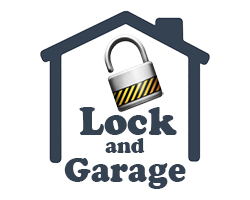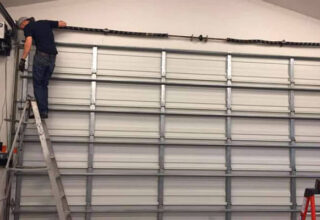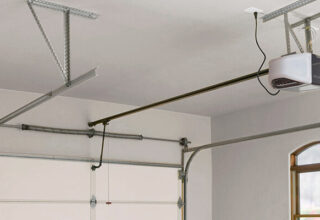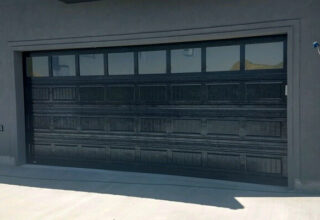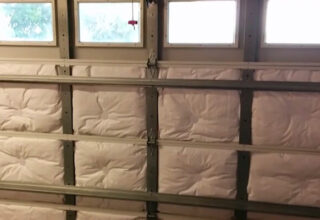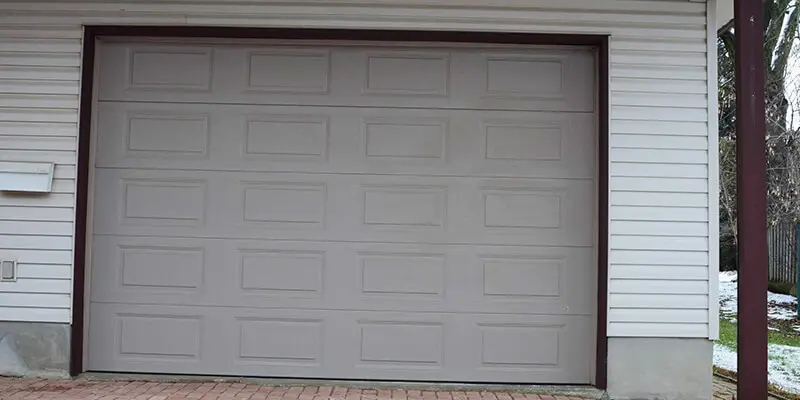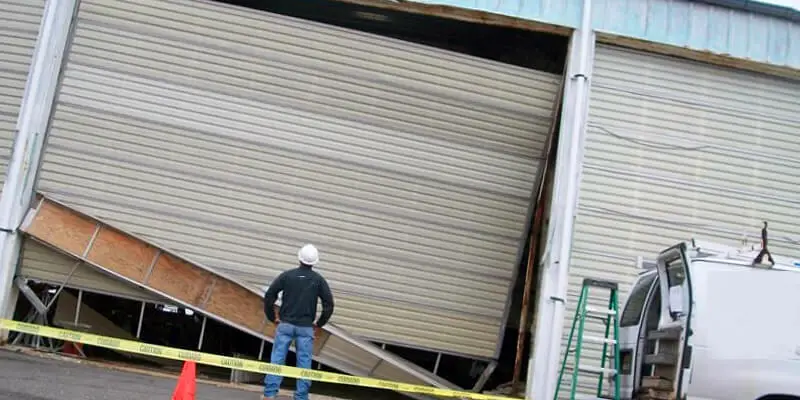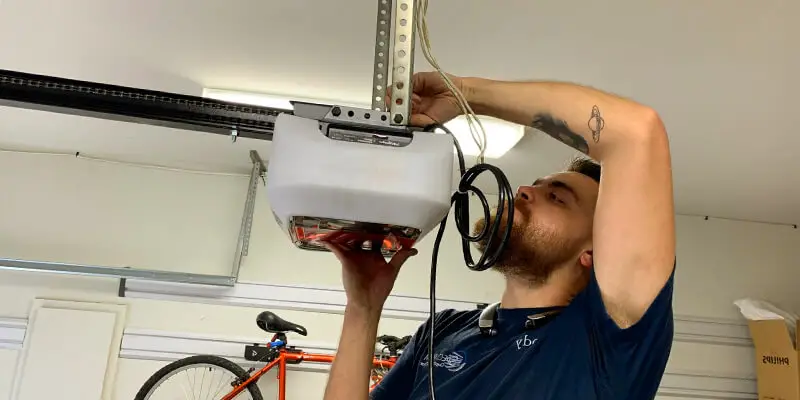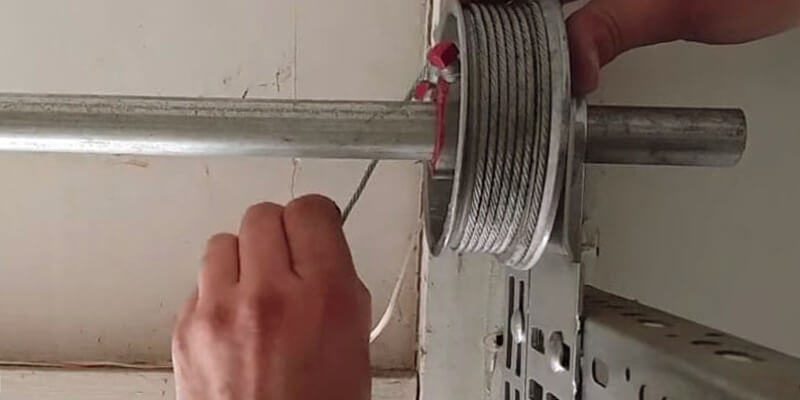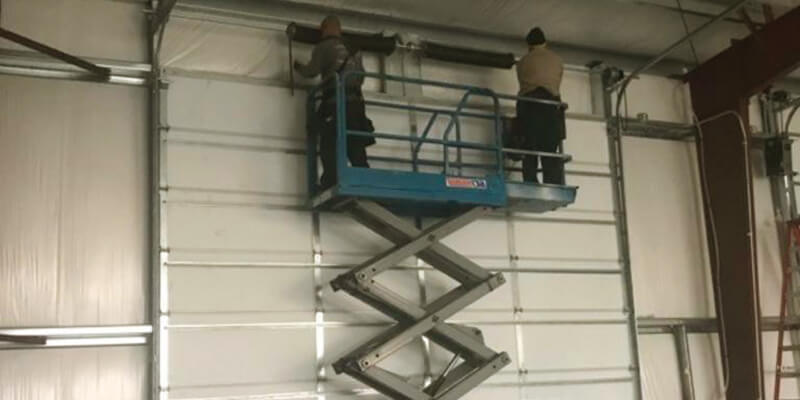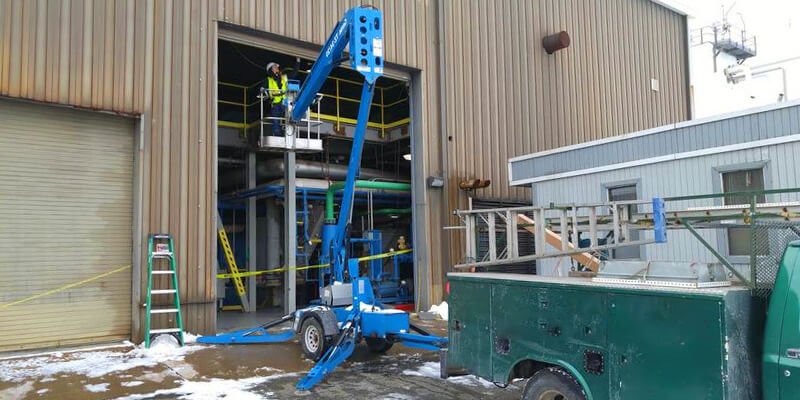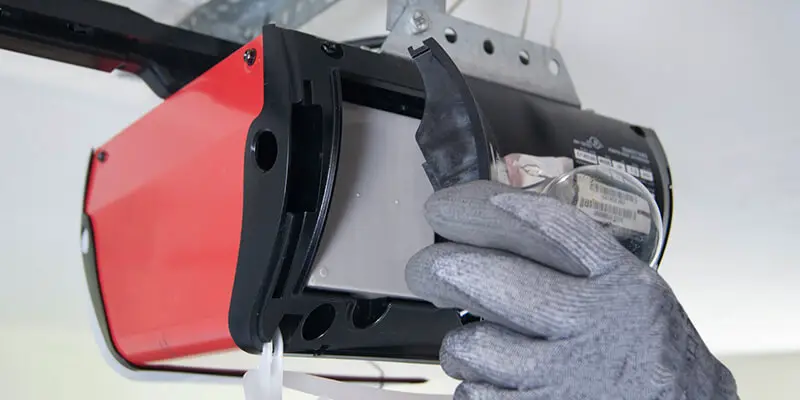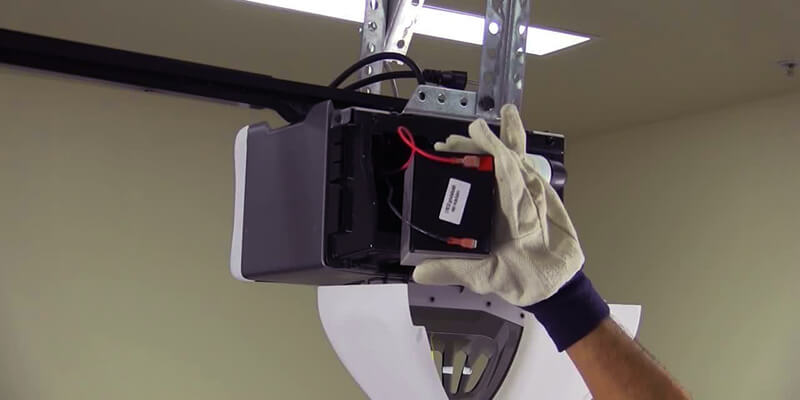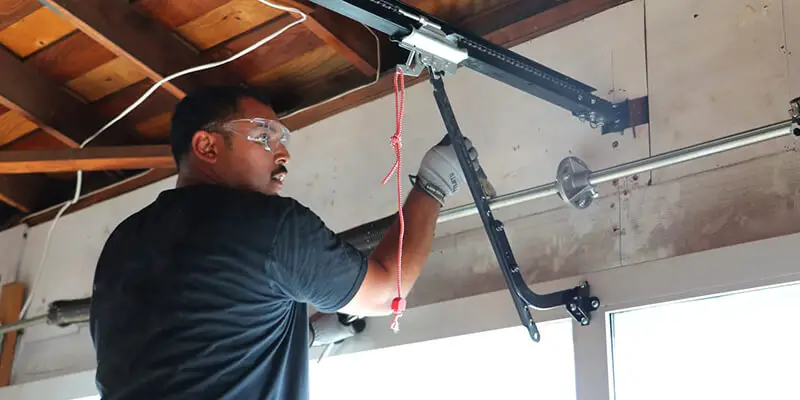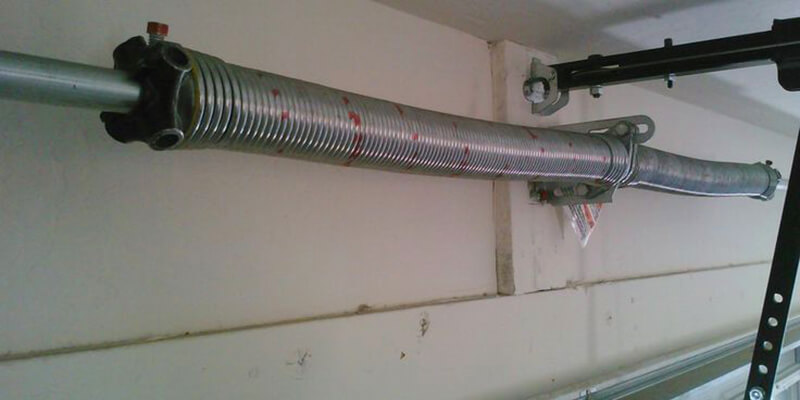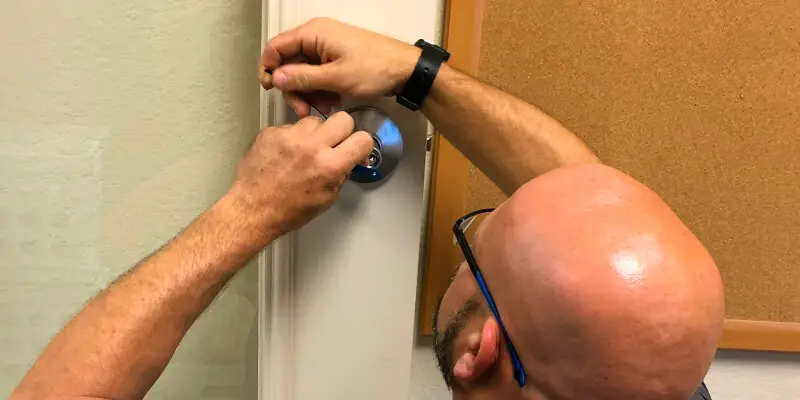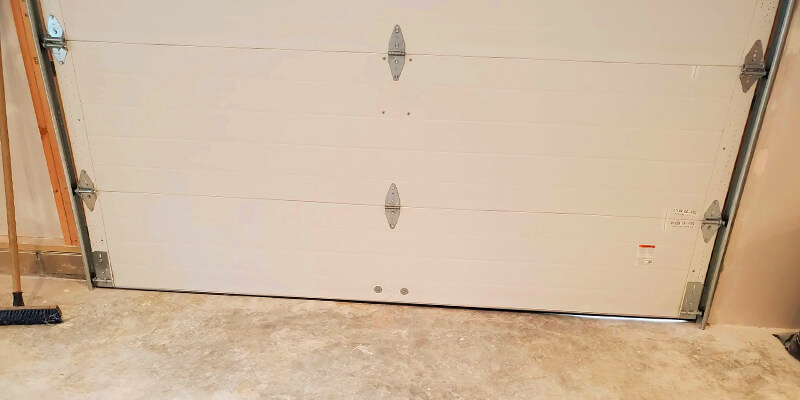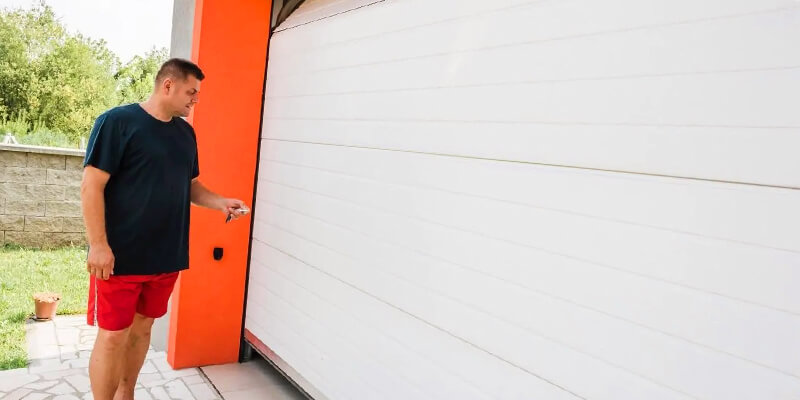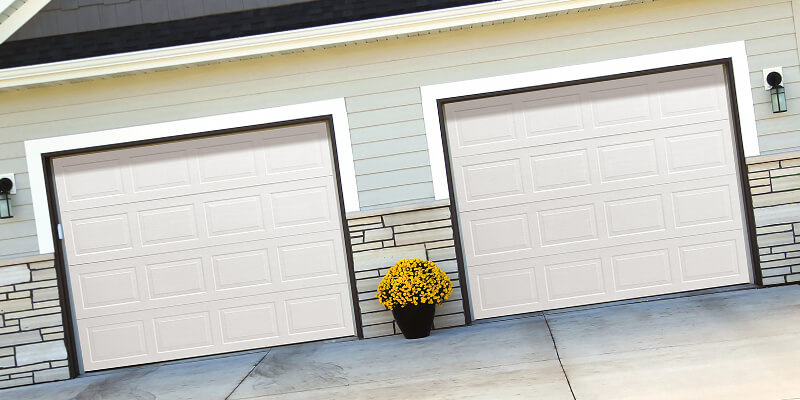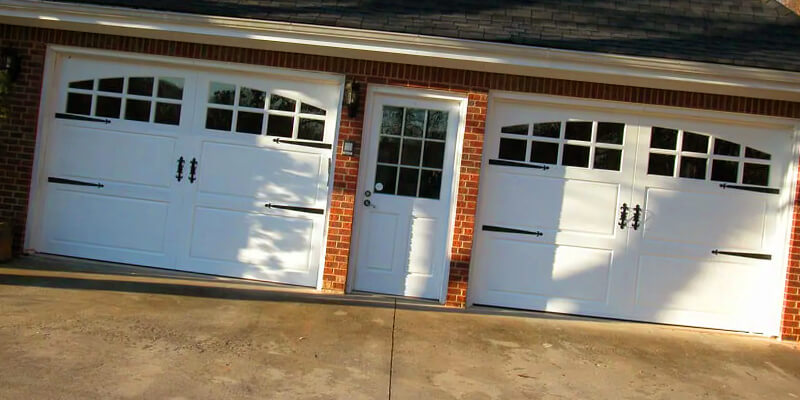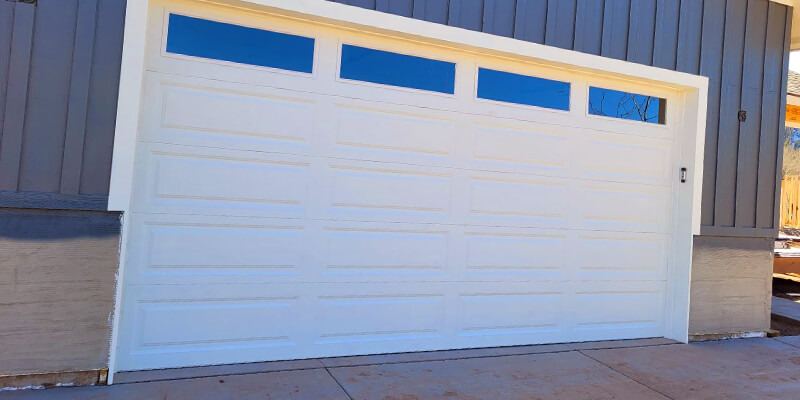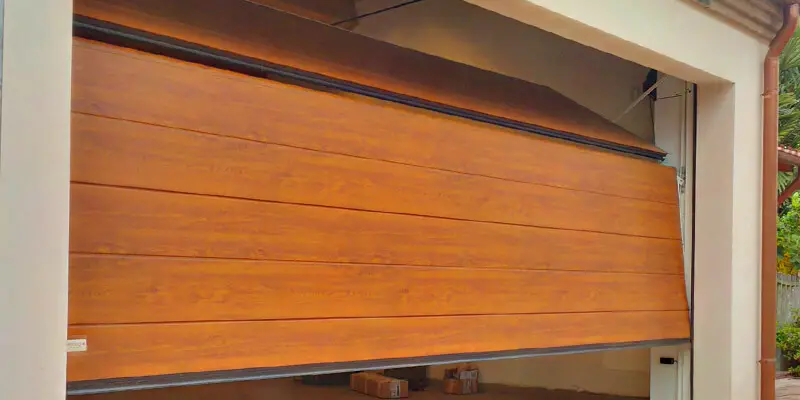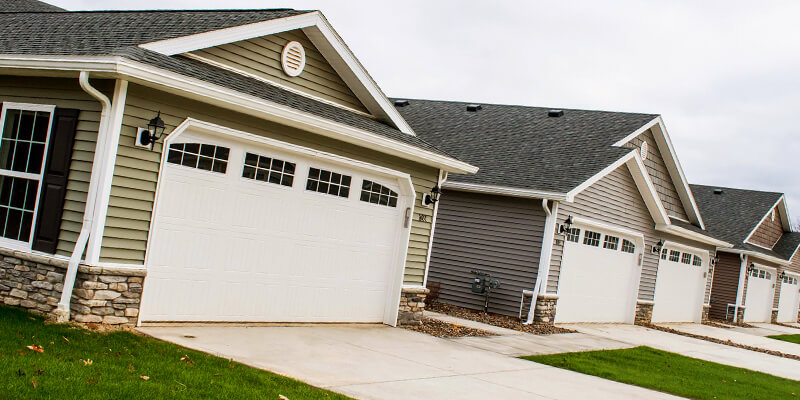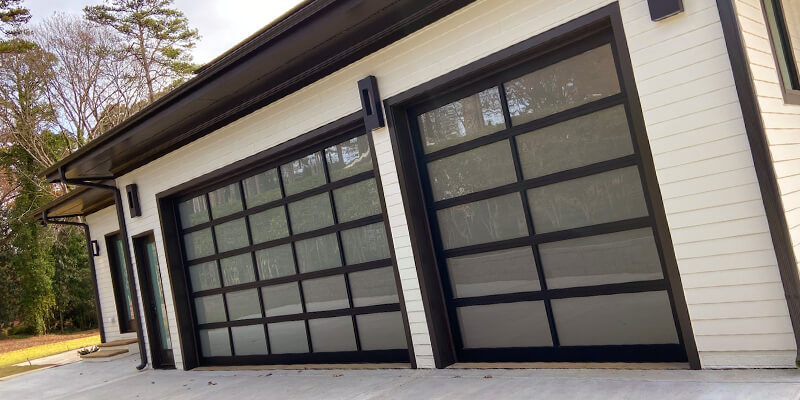Having a bent garage door is a common problem that you can fix with a few simple steps. It’s important to identify the cause of the bend before you start the repair process so you can make sure it doesn’t happen again. In this guide, we’ll walk you through the process of diagnosing a bent garage door, gathering the necessary tools and materials, fixing bent tracks and panels, adjusting, and securing hardware, and testing the repair to ensure proper functionality. We’ll also provide a few tips on how to prevent future damage and keep your garage door looking straight.
Bent Out of Shape: Identifying the Causes of a Crooked Garage Door
- The most common cause of a bent garage door is an accident. Whether it’s a car, a bicycle, or a runaway ball, something is likely to hit the door and cause it to bend. In some cases, a bad installation, over-tightening of the tracks or panels, or poor maintenance can cause bent doors.
- Rust is also a common cause of a bent garage door. If your door is made of metal, it’s important to check for rust regularly and take steps to prevent it. Even if the door looks fine, rust can form on the inside of the tracks and panels and cause them to bend over time.
- It’s also important to check for wear and tear on your garage door. If the tracks and panels are worn out, they can become weak and bend easily, even if they haven’t been hit by something.
- Finally, it’s important to check the hardware on your garage door. If the screws, bolts, and nuts are too tight, they can cause the door to bend. It’s important to make sure the proper and secure adjustment of hardware.
Diagnosis and Damage Control: Assessing the Extent of the Bend
- Once you’ve identified the cause of the bend, it’s important to assess the extent of the damage. Start by examining the tracks and panels and looking for any signs of damage. Check for cracks, dents, rust, or any other signs of wear and tear. You should also inspect the hardware for any signs of over-tightening.
- If you’re able to identify the source of the bend, you’ll have a better understanding of what needs to be done to fix it. For example, if the rust is the cause of bent, you’ll need to clean and lubricate the tracks and panels before you can proceed with the repair.
- It’s also important to measure the extent of the bend. This will help you determine how much force you’ll need to use to fix the door and make sure you don’t cause further damage.
Gearing Up for the Fix: Gathering the Tools and Materials You’ll Need
- Once you’ve assessed the extent of the damage, it’s time to gather the tools and materials you’ll need for the repair. Depending on the type of garage door you have and the extent of the damage, the tools, and materials you’ll need may vary.
- For most repairs, you’ll need a few basic tools, such as a wrench, a screwdriver, and a hammer. You’ll also need some lubricant, such as WD-40, to help you loosen and secure the hardware.
- If you’re repairing a bent panel, you’ll also need some sheet metal. The sheet metal should be the same thickness as the panel you’re repairing. You’ll also need a heat gun to help you bend the sheet metal and secure it to the panel.
- Finally, you’ll need some safety equipment, such as a pair of safety glasses and work gloves. It’s important to stay safe while you’re working on the repair.
Straightening the Lines: Fixing Bent Tracks and Panels
Once you have the necessary tools and materials, you can start the repair process. Start by loosening the screws, bolts, and nuts on the tracks and panels. You can use a wrench and screwdriver to loosen them. You may also need to use some lubricant to help loosen the hardware.
Once the hardware is loose, you can start to straighten the tracks and panels. If you’re repairing a bent panel, use a heat gun to heat up the sheet metal and bend it. Secure the sheet metal to the panel with the screws, bolts, and nuts.
You may need to use a hammer to help straighten the tracks and panels. Make sure to use the proper amount of force, as too much force can cause further damage.
Tightening the Screws: Adjusting and Securing Hardware
Once the tracks and panels are straightened, it’s time to adjust and secure the hardware. Start by making sure the proper adjustment of screws, bolts, and nuts. You can use a wrench and screwdriver to adjust them.
Once the hardware is adjusted, you can start to tighten it. Make sure to use the proper amount of force, as too much force can cause the panels to bend again. You can use a wrench and screwdriver to tighten the screws, bolts, and nuts.
It’s also important to lubricate the tracks and panels once the hardware is secured. You can use a lubricant, such as WD-40, to help reduce friction and keep the tracks and panels moving smoothly.
Putting it to the Test: Ensuring Proper Functionality after the Repair
Once the tracks and panels are straightened and the hardware is secured, it’s time to test the repair. Start by opening and closing the garage door a few times. Make sure the door moves smoothly and without any resistance.
You should also check the tracks and panels for any signs of wear and tear. If you find any cracks, dents, rust, or other signs of damage, you may need to replace the tracks and panels.
Finally, check the hardware for any signs of over-tightening. If the screws, bolts, and nuts are too tight, they can cause the door to bend again.
Avoiding Future Fiascoes: Prevention Tips for Keeping Your Garage Door Straight
Once you’ve fixed the bent garage door, it’s important to take steps to prevent future damage. Start by inspecting the tracks and panels regularly for any signs of rust or wear and tear. If you find any cracks, dents, or rust, replace the tracks and panels as soon as possible.
It’s also important to check the hardware regularly for any signs of over-tightening. Make sure the proper adjustment of screws, bolts, and nuts, but not too tight.
Finally, it’s important to take steps to prevent accidents. Make sure your garage door is clearly visible and marked, and that children and pets are kept away from it.
By following these tips, you can keep your garage door straight and ensure it lasts for years to come.
With the Little Bit of Effort, You Can Keep Your Door Functional!
Fixing a bent garage door doesn’t have to be difficult. With the right tools and materials, and a little bit of know-how, you can fix a bent garage door in no time. Just remember to identify the cause of the bend, assess the extent of the damage, gather the necessary materials and tools, fix the tracks and panels, adjust, and secure the hardware, and test the repair. Finally, make sure to take steps to prevent future damage and keep your garage door looking straight. With a little bit of effort, you can keep your garage door functioning properly for years to come.
Top related Search:Open Garage Door, fix a bent garage door, Long Panel Garage Door, commercial garage door, and more…
